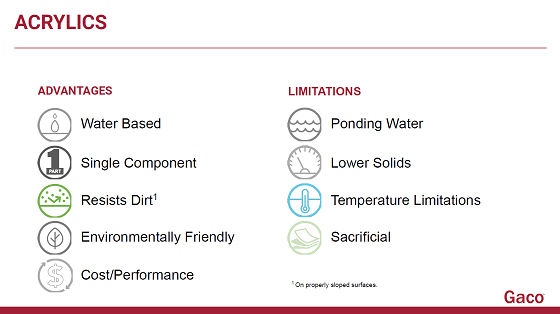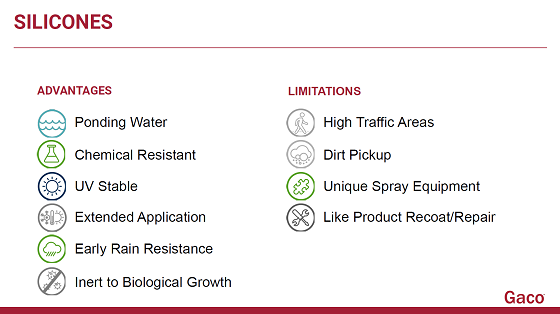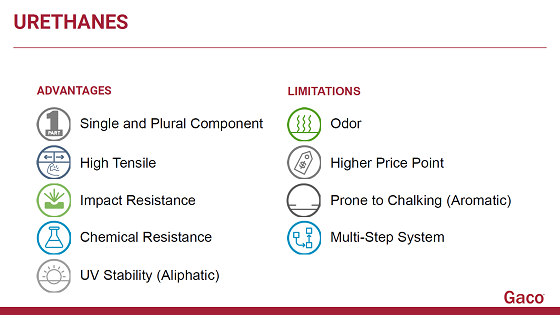A durable, sealed roof is critical to protecting and insulating a building and its tenants — whether those are individuals or goods. Many commercial roofing manufacturers offer warranties on the lifespan of commercial roofs.
But what if the client’s roof is damaged and not under warranty? You have options that may be more cost effective and waste avoidant than a full roof tear-off.
At the end of a roof’s life cycle — or whenever the roof is damaged — commercial roofers should perform a thorough inspection of the full roof. When in need of repairs, most commercial roofing membranes can be coated, including metal and single-ply solutions like ethylene propylene diene monomer (EPDM) and thermoplastic polyolefin (TPO).
When possible, commercial roofers should consider a liquid-applied roof coating over a complete roof tear-off as a customizable, environmentally considerate, and cost-effective option for roof restoration.

Benefits of Choosing a Coating
Where appropriate, selecting a roof coating over a complete roof tear-off provides numerous advantages for contractors, building owners, and their tenants. The first is customization. Coatings allow the unique needs of each building, such as geographic location, surrounding environment, and climate conditions, to be met.
Additionally, roof coatings stand at the intersection of innovation and sustainability. By choosing a coating over a roof overhaul, contractors and building managers can reduce material consumption and minimize roofing waste.
Another point for sustainability: The application of reflective coatings, often white, can help redirect heat away from a building. This is beneficial especially when the building is not equipped with high-performing insulation, and it can help a building reduce energy consumption for air conditioning, contributing to lower utility bills.
Such coatings, especially those recognized by the Cool Roof Rating Council (CRRC), align with certain municipalities’ white roof mandates and provide a cost-effective method of increasing the sustainability of a building and delaying the need for a full reroof.
Extra cost savings come from avoiding a full roof tear-off, which is expensive, or additional insulation during a replacement roof project that could be required to meet current code regulations. This could lead to further expenses and may not be feasible due to the height of existing parapet walls, the existence of skylights, and other obstacles.
From a tax-savings perspective, the classification of restorative coatings may be an expense or maintenance item rather than a capitalized investment that yields a key tax break.

Different Coatings for Distinct Challenges
By choosing the appropriate coating option, contractors can enhance the durability and overall performance of their clients’ roofs. Below are several roof coating material options, designed for various use cases to address distinct challenges:
- Silicone coatings can be applied to most existing roof substrates in a wide range of temperatures. Because they have good adhesion, are highly flexible, and are resistant to ponding water, silicone coatings are popular in areas with a lot of precipitation or on roofs with minimal slope. However, substrates still need to be dry and repaired prior to the application of this type of coating. Silicone coatings may also require unique spray equipment, which may not be as easily accessible.
- Urethane coatings are known for their durability and impact resistance, making them ideal for locations that are prone to severe weather events or that have frequent rooftop traffic. They have great chemical resistance, serving as a viable option for manufacturing and restaurant applications. Urethane coatings also surpass other coatings regarding tensile strength, and they can withstand extreme weather conditions. Some drawbacks to urethane coatings are that they can be slightly more expensive than other options, and they can be more sensitive to moisture during application, which in turn can affect the curing process.
- Polyurethane coatings and urethane coatings are similar (they have the same root, after all). Rich in urethane compounds, polyurethane coatings are protective and liquid applied. The benefits of polyurethanes include providing an air and vapor barrier above the membrane. But, similar to urethane coatings, polyurethane can also be sensitive to humidity and temperature during the application process.
- Acrylic coatings are the most popular roof coatings. They can help extend the life of a roof and are highly reflective, which can help a building owner save on cooling costs in particular climates. Acrylic coatings are typically used in high-heat, low-humidity locations where ponding water isn’t common. While they are great for reflectivity, acrylic coatings may not be as durable compared to other coatings, such as silicone or urethane.
While there are a variety of roof coating products available, some coatings have a greater proven benefit in certain climates. And — with any coating — labor, costs, and time can be a constraint for both the contractor and the building owner. That means that understanding the benefits and drawbacks of each type of solution before you recommend a solution will be crucial to the success of the rooftop coating.

Extending the Life of Roofs
Restorative coating products and practices allow contractors to extend the life of roofs for their clients in a customizable, sustainable, and cost-friendly manner.
Knowing these benefits can help you communicate to your clients how liquid-applied roofing solutions can be a better option than a complete tear-off at the end of the roof’s warranty or after damage has occurred.
Editor’s note: This article first appeared in the July 2024 print issue of CoatingsPro Magazine. Reprinted with permission.